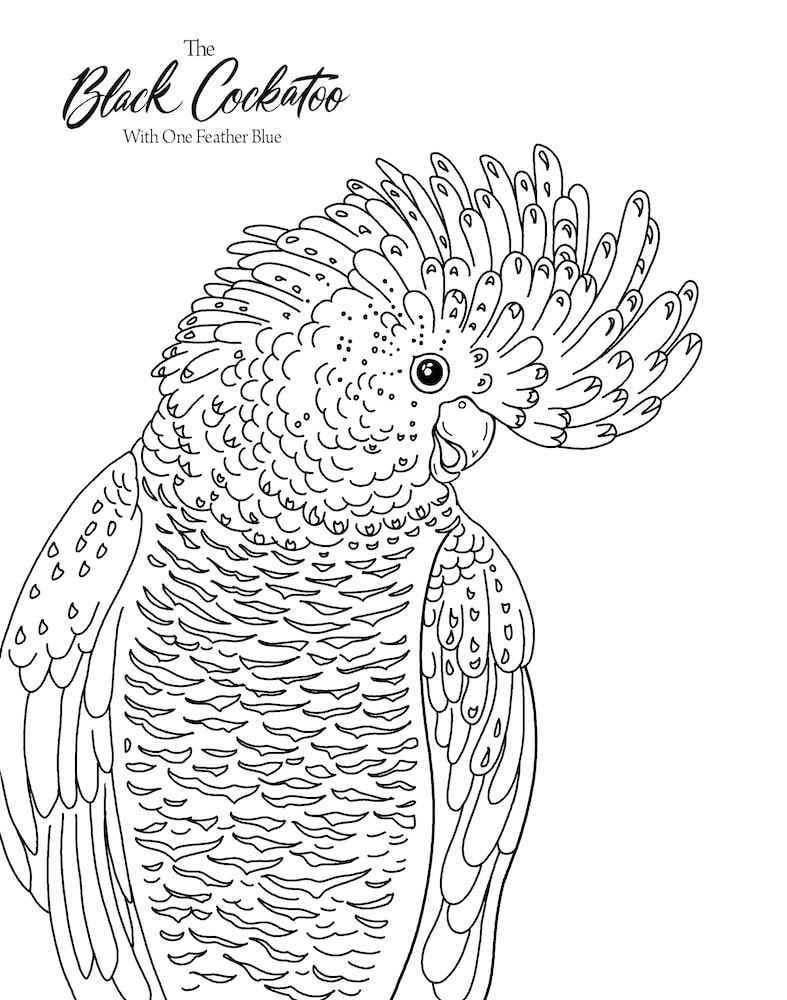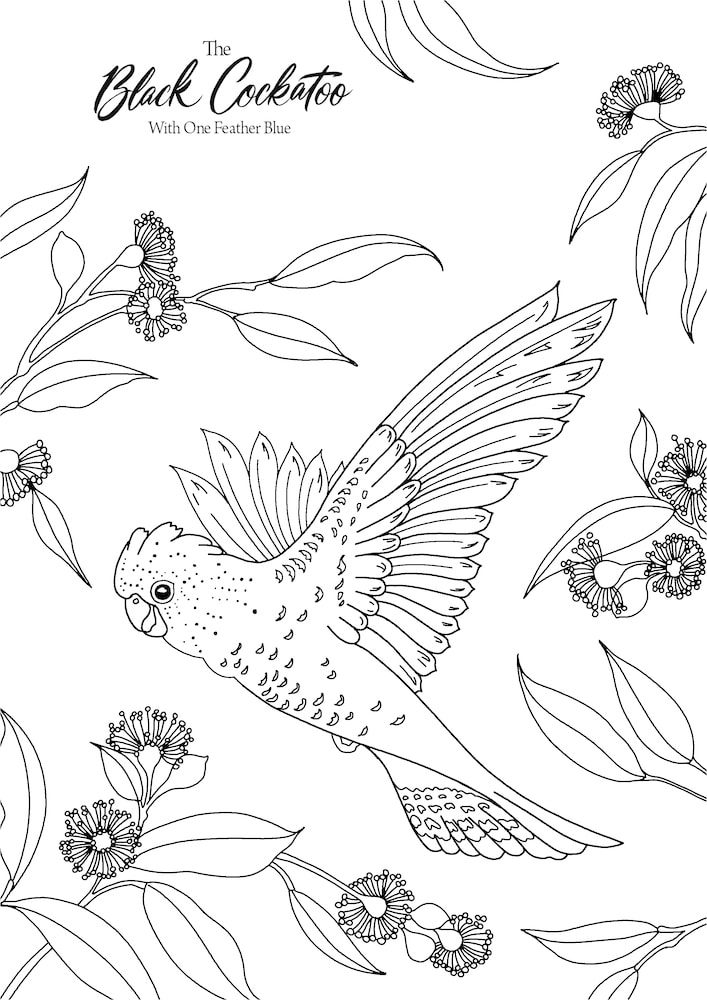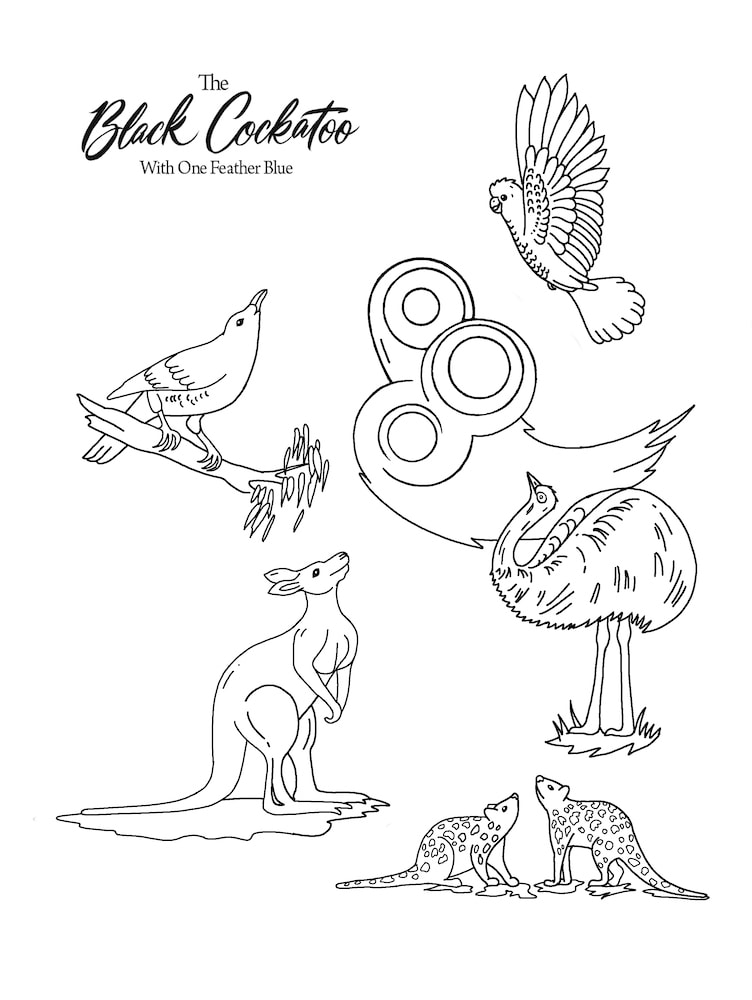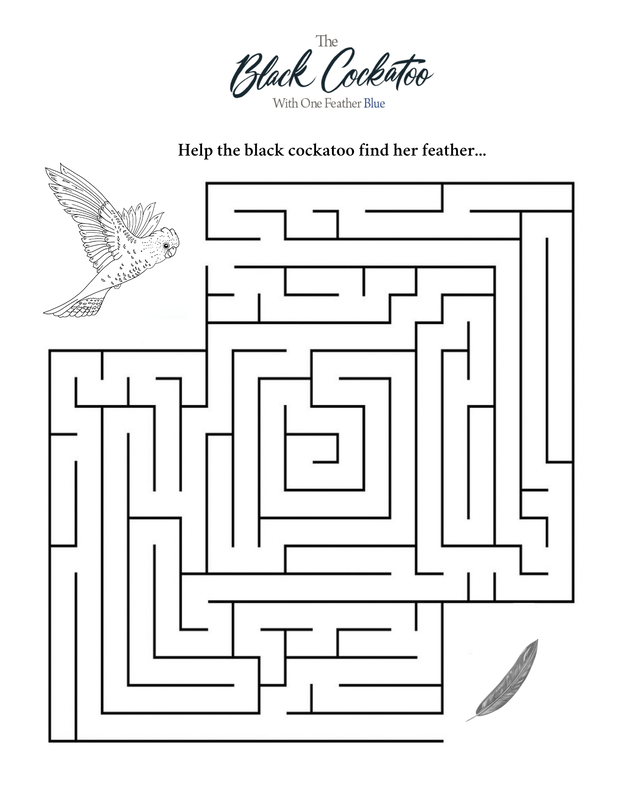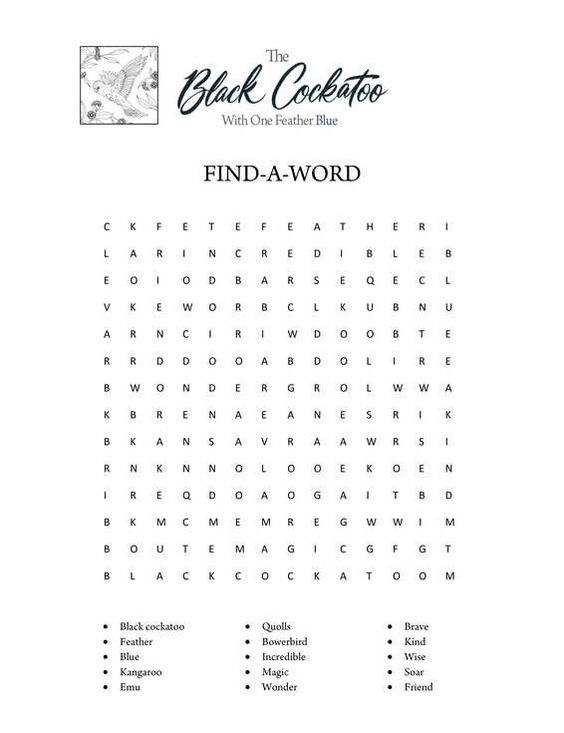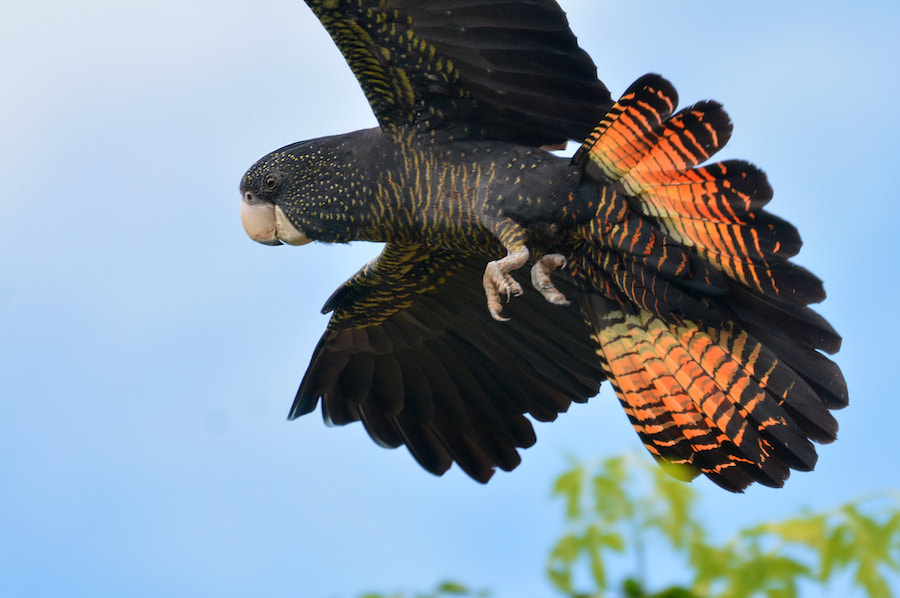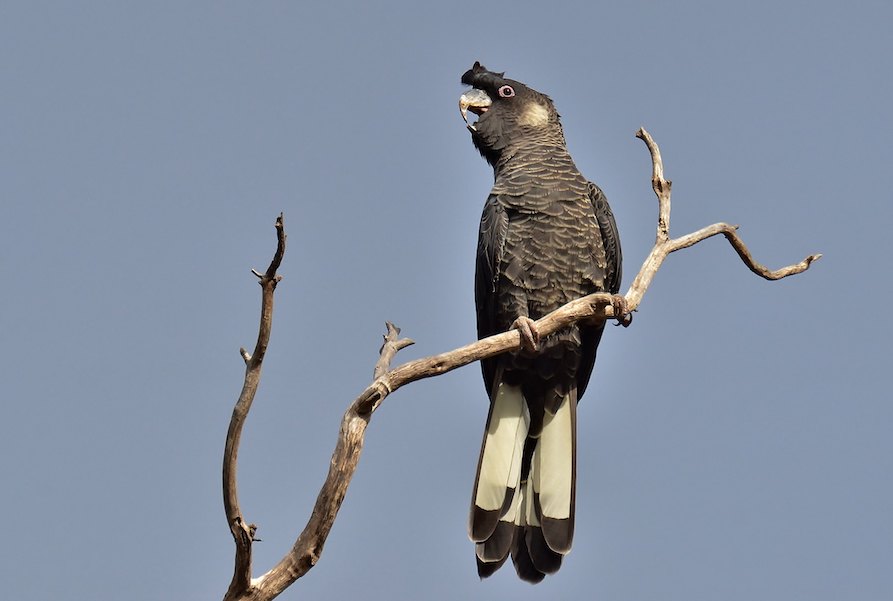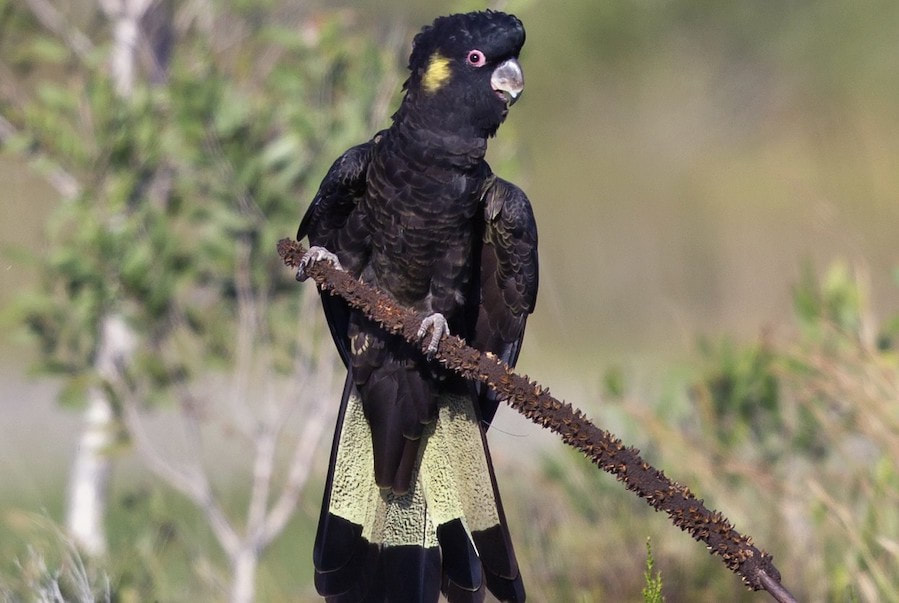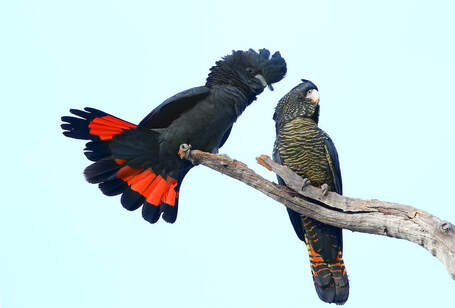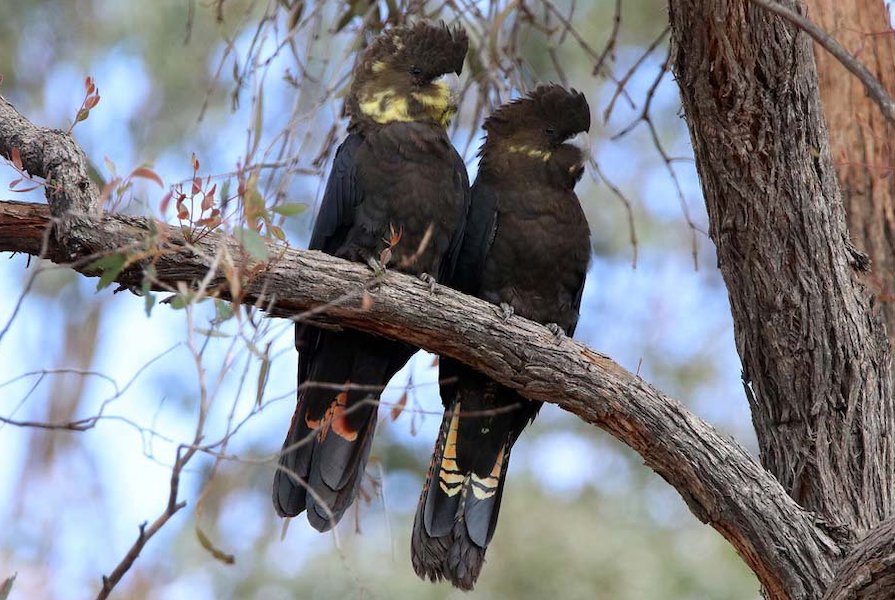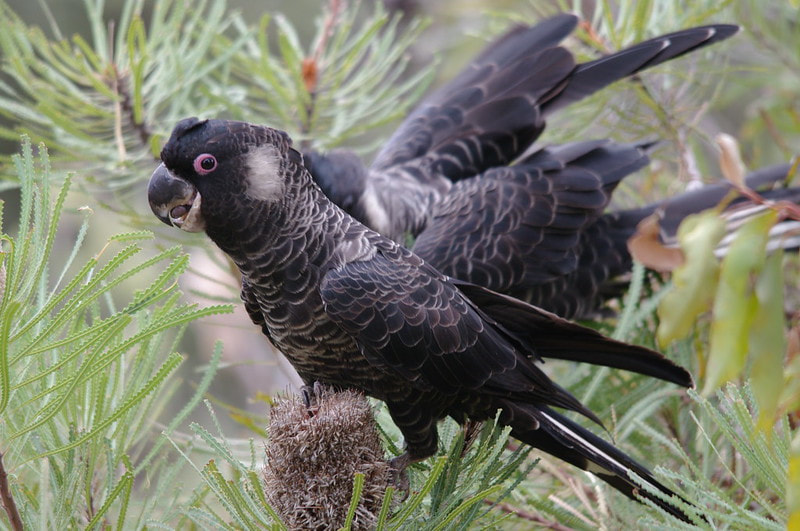The Black Cockatoo With One Feather Blue
Teaching notes: Foundation to Year 3
The Black Cockatoo With One Feather Blue Teaching Notes include book details, text features, literary devices, writing exercises, art and drama activities, and more! Plus curriculum mapping and syllabus codes. These notes focus on Foundation/Kindergarten to Year 3.
Download teaching notes here.
Download teaching notes here.
|
|
Free colouring-in sheets by Eloise Short
Click to download and print.
Free activities
Click to download and print.
Black Cockatoos in Australia
Black cockatoos are found right across Australia. There are five different species, each with its own variations of red, yellow, orange and white markings. The species featured in The Black Cockatoo With One Feather Blue is a female red-tailed black cockatoo (below left).
Currently, four out of the five main species of black cockatoo are under threat nationally. Read below to find out how you can help protect the future of these magnificent birds.
Currently, four out of the five main species of black cockatoo are under threat nationally. Read below to find out how you can help protect the future of these magnificent birds.
Red-tailed black cockatoo (female)Calyptorhynchus banksii: known for her yellow spots and details on her face, chest and wings, and her barred red-and-orange tail.
Baudin's black cockatooZanda baudinii: marked by its off-white feather tips, tail and cheeks. Endemic to Western Australia. Find out more here.
Yellow-tailed black cockatooZanda funerea: Known for its namesake yellow tail and cheek patches; the only black cockatoo not under threat. Read more.
|
Red-tailed black cockatoo (male, left)Calyptorhynchus banksii: The male is identifiable by his wide bar of red across his tail, and his very large crest. Find out more here.
Glossy-black cockatooCalyptorhynchus lathami: Male (L) and female glossies are actually blackish-brown, with unique yellow facial markings. More here.
Carnaby's black cockatooZanda latirostrus: Easily mistaken for baudin's cockatoos, carnaby's are distinguished by their shorter upper beak. Read more here.
|
Black cockatoos under threat
Currently, four out of the five main species of black cockatoo are under threat nationally, mainly due to the clearing of land in which black cockatoos live, feed and reproduce. Habitat loss occurs when land is cleared for agriculture, mining or logging, or it can result from bushfires.
What can we do to help?
There are many ways you can help save the habitat of black cockatoos and make it easier for them to find food and a place to live:
- Plant trees that black cockatoos like to eat and nest in.
- Build a bird bath so birds have access to water.
- Write to your state Member of Parliament (MP) to ban forest logging, deforestation and land clearing.
- Sign petitions that support the protection of black cockatoos’ habitat.
- Join a group – a bird group, bush regeneration group or fauna protection organisation – because working with others has a greater impact than trying to do it all by yourself.
- Join the Great Black Cockatoo Count in your local area.
- Get inspired by young environmental activist Spencer Hitchen who is on a mission to save the vulnerable glossy-black cockatoo.

